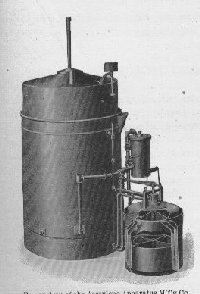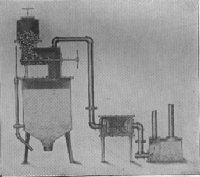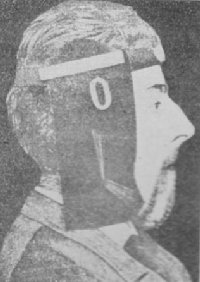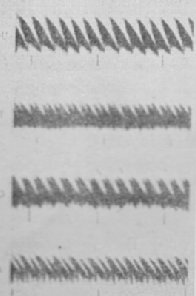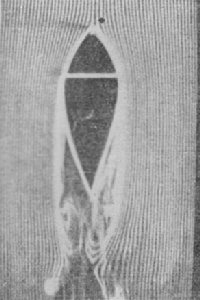|
Acetylene gas is given off when calcium carbide is put into water. Calcium, or calcium carbide, is a hard, porous, grayish material produced by fusing pulverized coke and air-slaked lime in an electrical furnace. One ton of this substance will make 11,000 feet of acetylene gas, which is equal in illuminating power to about 264,000 cubic feet of ordinary city illuminating gas. The method of making the calcium carbide is as follows:
WONDERFUL MOVING PICTURES A new process for the manufacture of white lead has been discovered by a chemist and mining engineer of Boston. This new process is what is known as the "electrolytic," and, judging from recent tests, it will be able to compete with the best now in operation. In the "electrolytic" process, a solution of sodium nitrate contained in two compartment cells, separated by porous diaphragms, is decomposed by an electric current. The electrodes in these cells are lead and copper. At the positive electrode, lead nitrate is formed and dissolved, and sodium hydroxide collects, and is dissolved at the copper pole. These solutions are drawn off and mixed in the proper proportions, and sodium nitrate is reproduced and lead hydrate precipitated in the form of an amorphous powder. A solution of sodium carbonate is then mixed with the lead hydrate, when lead carbonate (white lead) and hydrate sodium are formed. This sodium hydrate may again be converted into the carbonate by passing carbonic acid into it. The sodium carbonate may be used again for the conversion of more lead hydrate into white lead. The nitrate reproduced in the second operation may be again used as in the first, and there is but a slight loss in the repeated service of these two agents. During the past year, tests of the electrolytic pigment have been made, and in each instance it has proven itself equal to that manufactured by the Dutch. The new process is rapid, and requires only a small plant for a considerable output. It yields a good paint, with very little labor. The manufacture of white lead, which is the most important of all pigments, is a very old industry, the native carbonate, cerussie, having been used by the Romans. But as this mineral is restricted in its distribution, the artificial product was in time brought into use. The so-called Dutch process of making white lead is the oldest known, reference being made to it as far back as 1622. With a few modifications, it is still in use, and yields a product which, for many purposes, is preferred by painters to the lead manufactured by the numerous newer processes. It usually has more covering power, and a better color. The method consists in exposing sheet lead to the direct action of moisture, acetic acid vapors and carbon dioxide. Two other modes of manufacture are generally in vogue—the German, or Chamber process; and the French, or Thenard's process. MARVELOUS METALS RECENTLY DISCOVERED A French scientist, M. Marage, has invented a process by means of which it is now possible to photograph the human voice. The actual vibrations of the air, made in speaking the vowel sounds, can be recorded and made visible by an ingenious use of chronophotography, or the analyzling of motions by means of instantaneous photographs. Every one is familiar with an opposite and synthetic use of chronophotography, the presenting of animated views of moving objects by means of the kinetoscope.
M. Marage's scheme may be described as follows: the vibrations of the air set in motion by the voice are made to act upon the flames of acetylene gas, issuing from specially prepared burners. The flames, vibrating in unison with the sound waves, throw their images into a revolving mirror, which dissociates and causes them to appear in various forms, according to the sound. By means of the acetylene flames, which are photogenic, the vibrations are recorded on a ribbon of sensitized paper. It has been found possible also to photograph the various functional movements of the body. Thus the motions of the lower jaw in the act of opening the mouth may be represented, as well as the movements of the ribs in respiration. Another ingenious use of chronophotography makes it possible to reproduce in visible form the action of air currents in their passage around an obstruction, as shown in one of the accompanying illustrations. THE SOLAR FURNACE |
